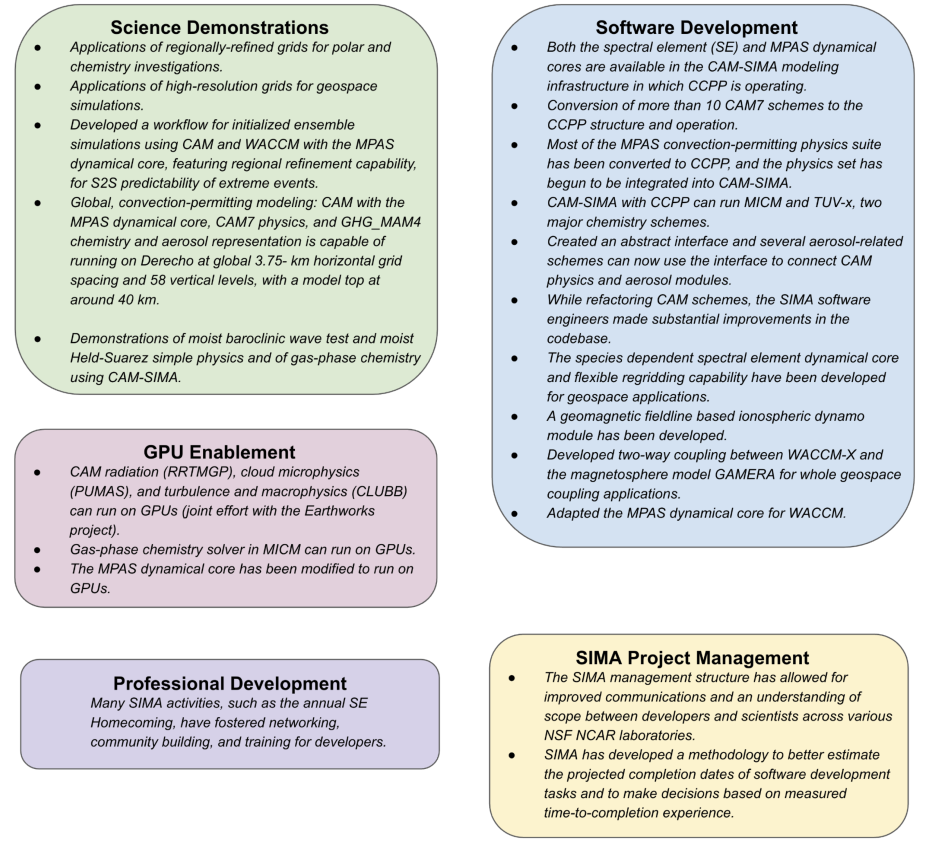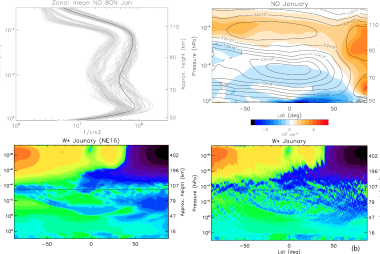The SIMA project formally concludes
The System for Integrated Modeling of the Atmosphere (SIMA) project will formally conclude at the end of this fiscal year.
The SIMA project will conclude at the end of this fiscal year (Sept. 30, 2025) following three years of funding committed to the project by the NSF NCAR Directorate’s Office. The SIMA team has achieved numerous successes (see figure) in coordinating software development across five laboratories, enabling configurable options within the NSF NCAR modeling ecosystem, providing access to multiple dynamical cores and physics packages, and pushing capabilities to global convective-permitting modeling. In particular, one of SIMA’s most important legacies will be the role the project played in transforming the way we work here at NSF NCAR. The SIMA team created a strong culture of cross-organizational software engineering development that represents an organizational best practice.

SIMA Activities Continuing
Though the project is formally winding down, software development will continue on some of its efforts, such as the interoperability of CAM7 physics and porting of MPAS physics into CAM-SIMA, as part of our NSF NCAR’s Community Software Facility (CSF). The full concept for the new facility is still being developed, but an overarching driver for CSF is that it will advance the improvement, modernization, and support of the scientific modeling capabilities at NSF NCAR. That work will build on the foundation that the SIMA project created, by improving interoperability and expanding capabilities in atmosphere-ocean coupling, expanding computation on GPUs, and providing training, professional development, and a sense of community for software engineers at NSF NCAR.
Software development efforts will also continue for some other aspects of SIMA, such as with MUSICA to advance chemistry modeling, in deep atmosphere modeling for geospace simulations, and through science activities of the NSF NCAR Earth System Predictability Across Timescales (ESPAT) initiative’s S2S predictability research.
Thank you to SIMA lead Mary Barth, SIMA project manager Domi Colgrove and the entire SIMA team, the External Advisory Committee, the SIMA Steering Committee and all the staff that have contributed to this valuable project over the years.
For any questions or comments, please contact Mary Barth (barthm@ucar.edu).








